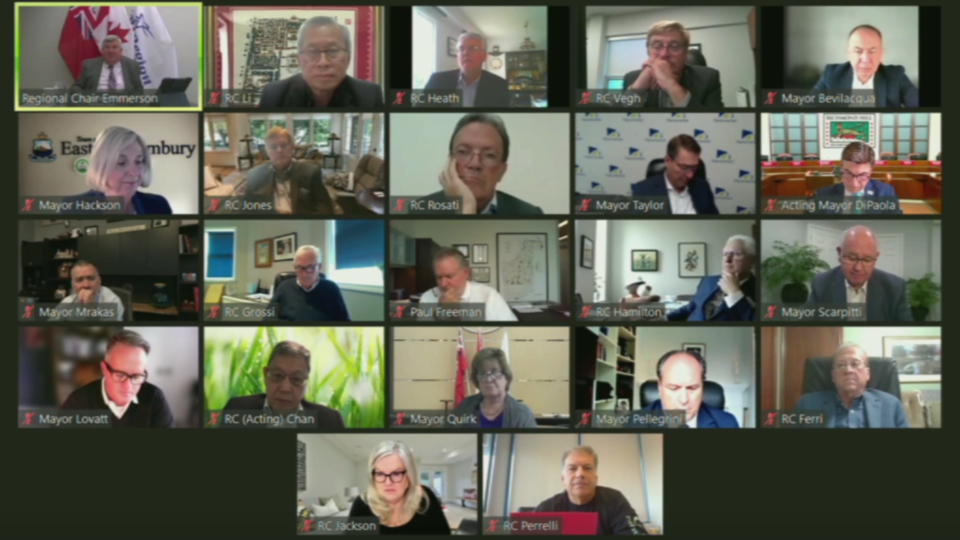York Region council voted against hiking intensification of future development within urban boundaries, despite concerns from some residents about increasing urban sprawl.
Council voted 16 to 5 against a resolution by Newmarket Mayor John Taylor to increase the region's development targets to 60 per cent within urban boundaries up to 2051. Instead, the region is opting for a phased 50 to 55 per cent intensification rate, which will potentially open up 1,400 more hectares for development compared to Taylor's proposal.
Taylor said aiming for a higher intensification rate at 60 per cent would be a better move for the environment and help address resident concerns about sprawl. He said municipalities need to move away from sprawl toward intensified, transit-friendly communities.
“Most of us have declared a climate crisis in our communities, and I think the people are wondering what does that mean to us and are we going to reflect that in our policy in a more serious way. I think this is an opportunity to do that,” Taylor said. “It’s more (environmentally sustainable), it's better for climate change, it’s more affordable for municipalities and the infrastructure that’s required.”
York councillors disputed the future direction of growth in the region, and how much it should intensify — development within already developed areas — versus expanding outside urban boundaries into new "settlement areas." The region is setting its target in place as part of a municipal comprehensive review.
While municipalities like East Gwillimbury are asking for less intensification to allocate more of its undeveloped, agricultural “whitebelt” lands for future development, some groups have raised concern about the impact of increasing urban sprawl versus creating denser communities to reduce vehicles on roads and protect agricultural space.
York council spent three hours listening to delegations, with more than 25 concerned citizens and groups presenting. Most were opposed to expanding urban boundaries and opening agricultural lands for development. But council also heard from developer and landowner representatives who want to see some of the whitebelt lands opened for development.
Steve Gilchrist of the Oak Ridges Moraine Land Trust spoke against proposals to expand into the whitebelt or other protected lands and said the region needs to favour dense development.
“We should be looking for ways to reduce car uses, not promote or guarantee its long-term requirement," he said.
Don Given, a spokesperson for two development groups and the East Gwillimbury whitebelt landowners group, said more urban expansion is needed to supply housing. They support at least 70 per cent of East Gwillimbury whitebelt lands opening for development and said the region needs to consider ensuring a large enough development base to help fund the Upper York Sewage Solutions project.
Staff recommended an approach of a 50 per cent intensification rate, phasing into 55 per cent starting in 2041, which it argued would achieve the right balance for the wishes of all the region's municipalities. Chief planner Paul Freeman said the 60 per cent target could be “aggressive,” but added there is merit to the argument the region could monitor and adjust in future reviews.
“It wasn’t our recommendation because it would likely require too significant a shift to higher-density structure types,” he said.
The staff recommendation would result in more than 2,000 hectares used for urban expansion. The 60 per cent intensification would reduce that to 700 hectares.
East Gwillimbury Mayor Virginia Hackson said the greenbelt already protects prime agricultural lands from development. She said only 17 per cent of East Giwllimbury’s total land is available for possible development, including the whitebelt, with the rest protected by greenbelt and other plans.
“We need it in East Gwillimbury,” she said. “We are also looking at growing our employment lands and we’re anxious to get going with it.”
Several councillors noted there are challenges with further intensification, with people protesting new development in existing neighbourhoods. Richmond Hill Acting Mayor Joe DiPaola said environmental groups need to get involved with that side of the fight and help address the pushback that comes against intensification, such as townhomes or condos.
“Until everyone gets on board with intensifying around transit, we have to allow for houses to be built as our staff is recommending,” he said.
Council went on to approve a resolution to designate a minimum of 70 per cent of East Gwillimbury's whitebelt lands for community and employment areas.
In a separate resolution, council voted to ask the province to redesignate Whitchurch-Stouffvile lands in Gormley and south of Betheseda Road, protected under the Oak Ridges Moraine Conservation Plan, as urban settlement areas, instead of redesignating some whitebelt lands.
